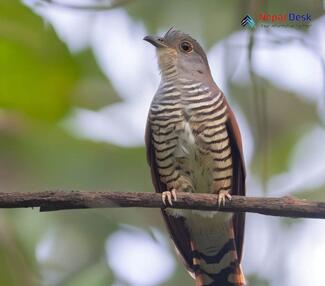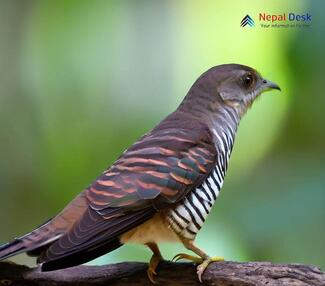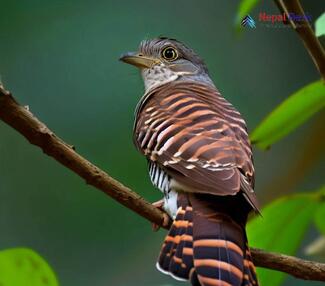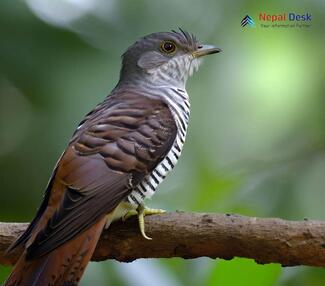Nepal, a country renowned for its diverse landscapes and rich biodiversity, offers a spectacular haven for bird enthusiasts. One such fascinating avian visitor is the Banded Bay Cuckoo (Cacomantis sonneratii), a unique and captivating species whose presence adds to Nepal's already vibrant bird-watching scene. Here's an in-depth look at this remarkable cuckoo species and its distinctive behavior that sets it apart from the rest.
Identifying the Banded Bay Cuckoo
First and foremost, let's dive into the physical characteristics that make the Banded Bay Cuckoo easily recognizable from other cuckoos. These small-sized birds grow up to 22-23 cm in length, with an agile build and a striking plumage pattern. The upper parts of their body exhibit a mix of brownish-grey and cinnamon shades, while their undersides boast bold black-and-white bands. Another distinguishing feature is their slightly curved bill with a touch of yellow, exuding an unmistakable charm.
Habitats and Distribution
In Nepal, you can find Banded Bay Cuckoos gracing diverse habitats such as deciduous or mixed woodland areas with bushes, shrubs, and open clearings. Their nesting season falls predominantly between June and September when they prefer wetlands near forests or even cultivated lands. Though being native inhabitants of southeast Asia, their distribution ranges from India to China, Vietnam, Indonesia, and the Philippines.
Brood Parasitism: A Unique Breeding Strategy
One extraordinary aspect of the Banded Bay Cuckoo's life cycle is its peculiar brooding technique – brood parasitism. Instead of building their nests and rearing their young, these birds rely on other unsuspecting species to do the job for them! Females sneakily lay their eggs in host species' nests once they leave, and upon hatching, the foster parents nurture and tend to the cuckoo chicks as their own.
Feasting on Insects
In terms of diet, the Banded Bay Cuckoo chiefly feasts on insects, including a variety of caterpillars, which make up around 50% of their diet. Due to their preference for insect prey, they play a vital role in controlling harmful insect populations that could otherwise damage agriculture.
Encountering these Avian Wonders
Bird-watching enthusiasts who wish to revel in the Banded Bay Cuckoo's enigmatic presence can explore popular birding hotspots in Nepal. The areas around Chitwan National Park, Shivapuri Nagarjun National Park, and Koshi Tappu Wildlife Reserve host a myriad of local and migratory bird species, offering ample opportunities to spot these intriguing cuckoos amidst breathtaking scenery.
In conclusion, the Banded Bay Cuckoo is not only a fascinating bird species but also one that contributes to maintaining ecological balance by controlling pest populations. Bird lovers are sure to cherish an encounter with these elusive beauties in Nepal's diverse habitats. So if you have an affinity for avian wonders or simply want to revel in nature's bounties, make sure to add Nepal's bird-watching hotspots to your must-visit list.




